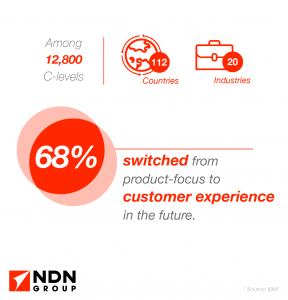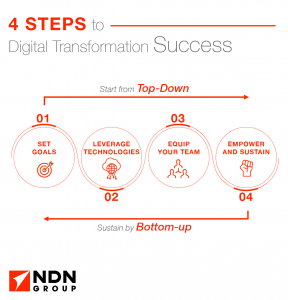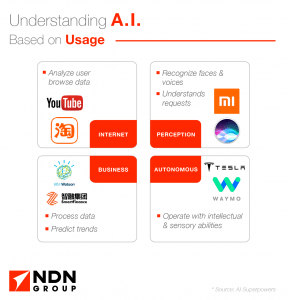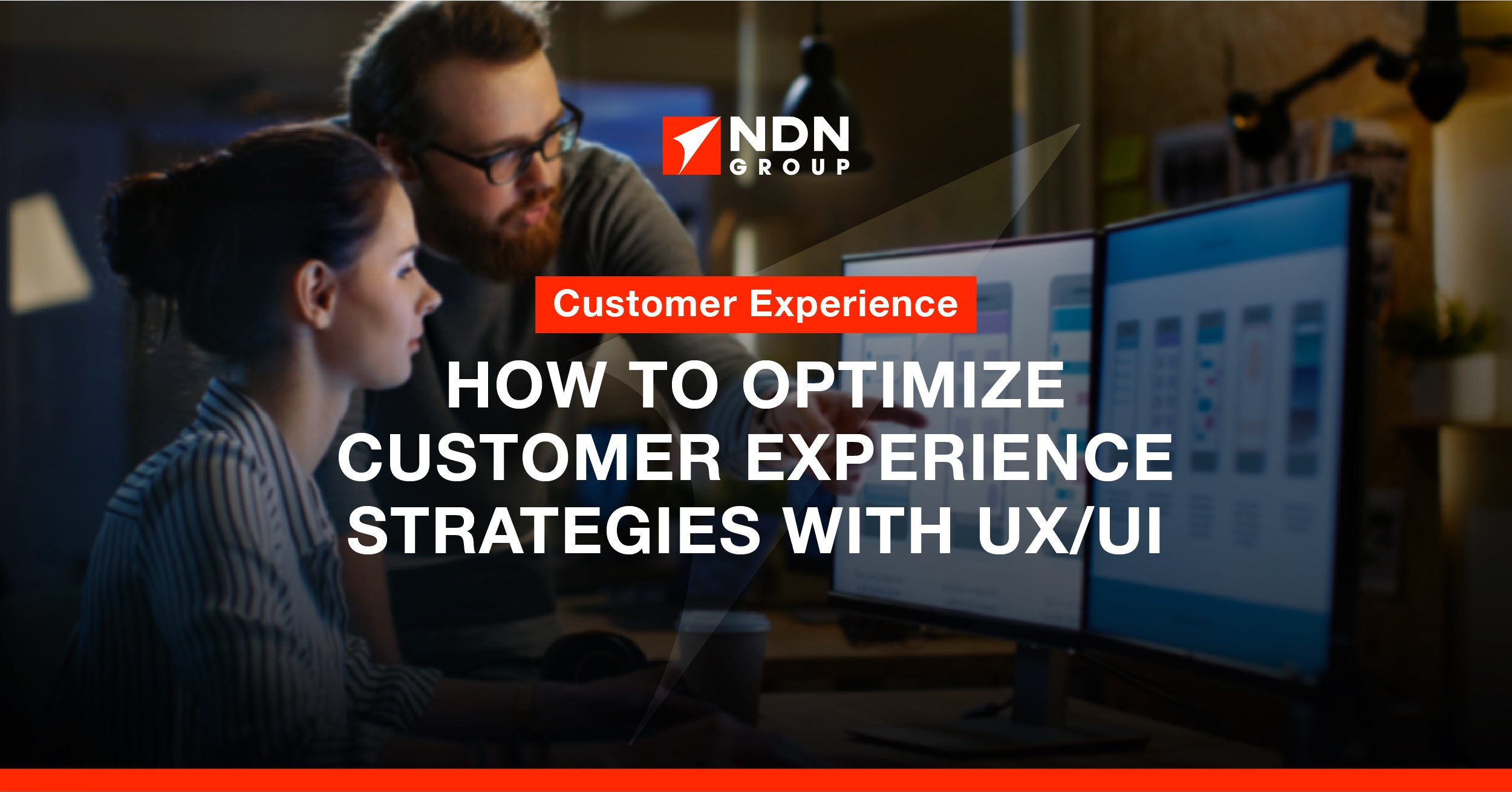Digital innovation is an irreversible trend intrinsically tied to business survival. It is, however, easier said than done when it comes to larger enterprises with traditional business mindsets and a complex organizational structure. The clock is ticking; the question is: how to get started?
Tailored to enterprises starving for change, this digital transformation playbook covers fundamental concepts, values and goals of digital transformation, prior to unfolding a detailed step-by-step action plan. We also shed light on anticipated challenges and a market overview for 2020 to complete a comprehensive strategy.
1. Introduction: Change for survival
If you ask why an enterprise decides to invest in digital transformation, it is most likely about survival. Some call digital transformation a revolution, one that has been spanning across the globe, impacting businesses big and small in every industry. According to Global Digital IQ Survey 2018 by PwC, 64% of top financial performers say their business faces a serious threat from disruption. Moreover, over half of the tech leaders (54%) believe that their company will fail within four years if they aren’t successful in their digital transformation efforts, as shown in the Wednesday report from Couchbase.
Today, businesses in any industry are at risk. Tomorrow, an industry giant could be taken over by a disruptive innovator. Looking back, the economic landscape has never stopped changing; but “digital” has accelerated the pace tremendously while pushing businesses to compete in a global market space. The only way for them to keep their competitive edge is to act now: to constantly challenge the status quo, improve and transform.
Let’s admit the truth. Digital transformation is costly and complicated. While uncountable businesses announced victory in achieving exponential growth in profitability and efficiency by leading the change years ago, many remain wavering and unsure about transformation. Here’s the good news: sound leadership will turn the investments into competitive advantages, and save your business from going all-in blindly to technology. The key roles of leadership will be discussed throughout the step-by-step guide to help businesses in need to develop a sound digital transformation strategy.
People over digital
If you don’t know where to start, always remember the core objective of digital transformation is to serve people, i.e. to elevate customer experience and empower employees to work more efficiently. Whether the transformation will go well depends on people too – leadership with clear visions and business strategies, whereas technologies are just your tools to fulfill the objectives.
Think of it as a fitness training program. Profitability and efficiency (your transformation motives) can be enhanced through training up employees with customer-centric mindsets and digital skill sets (mindsets and muscles), getting rid of unnecessary processes (body fat) with the help of innovations and technologies (diet and workout plans). Instead of following whatever resources available online, what you really need is a transformation guide tailored to your own needs.
We are about to take you through a holistic transformation from the fundamental concepts to an actionable roadmap, from the latest digital trends to top tips for avoiding potholes and achieving success.
2. The fundamentals
What is Digital Transformation?
Digital transformation is a holistic business initiative. If you look it up in Gartner IT Glossary, the definition also includes a similar term: “digitization”. Digitization is the process of changing from analog to digital form, also known as digital enablement, without any different-in-kind changes to the process itself.
Another commonly confused word is “digitalization”, the use of digital technologies to change a business model and provide new revenue and value-producing opportunities; it is the process of moving to a digital business. Digitization and digitalization are operational necessities, but they do not represent a full view of digital transformation.
Digital Transformation, as defined by Gartner, refers to
“ anything from IT modernization, to digital optimization, to the invention of new digital business models.”
As the name hints, digital and IT technology play a big part in the transformation. It often includes a range of digitalization projects, the process of employing digital technologies and information to transform business operations and processes, and ultimately the business models. Artificial Intelligence (AI), machine learning (ML), big data, blockchain and cloud computing are among the most common technologies used in digital transformations.
Pillars of Digital Transformation
The term “digital” leads to common misconceptions of IT being the focus of change. There are “forward-thinking” and “passionate” businesses out there that welcome any forms of latest digital technologies with open arms and ends up with a large sum of investment going nowhere. Emerging technology, like any other forms of investment, is risky, especially when evolving at an incredible speed.
Rather than adopting whatever technologies are trending, digital transformation is more about shifting thinking, changing products and processes to accommodate the digital environment. A real transformation requires a profound shift from product-focus to customer experience excellence, from functionality upgrades of products and services to operational efficiency.
Yes, it is easier said than done. The next question is where and how to start? Goal-setting is always the first and foremost. Begin with reimagining business goals and encouraging radical alterations to work cultures, norms and values, while technologies and innovations serve as enablers for this holistic change. Look into the step-by-step guide for more actionable tips and pitfalls to avoid.
3. Actual values of Digital Transformation
Elevate Customer Experience
Customer experience (CX) is never the cherry on top but the cake itself, in case you are not fully aware. According to Gartner IT Glossary, CX stands for the customer’s perceptions and related feelings caused by the one-off and cumulative effect of interactions with a supplier’s employees, systems, channels or products. From a report issued by Mckinsey & Company, customer-experience leaders gain rapid insights to build customer loyalty, improve employee satisfaction, and adds up to revenue gains of 5 to 10 percent and cost reduction by 15 to 25 percent within two or three years. The customer-centric redesign process creates exponential values to the business in numerous aspects.

Moreover, with rising consumer demand and competitive pressures, whether your enterprise can deliver a positive CX is the key to survival, as it essentially defines your business’s relationship with customers, and hence the long-term sales and revenue. According to a study by IBM, 68 percent of 12,800 C-levels surveyed across 20 industries said that they expect organizations to emphasize CX over their own products in the future.
What comes as a surprise is that while 80% of the enterprises interviewed by Bain and Company believe they deliver “super experiences”, only 8% of their customers agree. This has revealed a significant gap between how well enterprises think they are performing and the cold reality. With customer-centricity being a dominant trend across the globe, there is an urgent need for businesses to re-examine customer experience and take it as a priority.
Maximize operational efficiency
Operational processes occur at all organization levels. Process automation is another common goal in digital transformation to enhance efficiency and productivity in the workplace, with specific goals varying from one industry to another. Common processes range from quality assurance, delivery, employee analytics, help desk support, auditing, cost estimation to marketing research, etc.
Automation boasts a faster, cheaper and easier way to perform repetitive, manual processes, with advantages such as
-Increasing output
-Reducing labour costs
-Improving workflow
-Standardizing product/service quality
-Minimizing errors
These benefits eventually lead to better customer satisfaction and employee satisfaction. Research suggests that as many as 45% of the activities individuals are paid to perform can be automated by adapting currently demonstrated technologies. Furthermore, automation will offer significant competitive advantages typically between 3 and 10 times the cost.
Is the investment worth the risk?
As the general rule goes, great rewards come from taking risks. Digital transformation involves complex changes in business strategies and operational structure. It is a long-term, large-scale investment with high-level risk coming with it, especially for companies lacking common knowledge on the impact of the transformation on the business. Digital training is crucial for all employees, especially the C-suite and senior management.
McKinsey suggests that the success rate of digital transformation initiatives is less than 30%. Said another way, more than 70% of these initiatives fail. So the question here is how can your company make sure it is getting a positive return on investment from the money and resources dedicated to the project? That’s where leadership and the concept of digital ROI come in.
Companies moving forward on a digital transformation are well advised to take on an enterprise-wide view during the planning and prioritizing process if they hope to fully align investments to their overall digital strategy. It is an integrated approach that requires top-down goal setting and regular measuring of performances and returns. A set of key performance indicators (KPIs) metrics are necessary to keep track on the impact of digital initiatives more accurately and make adjustments to execution or even incremental goals when necessary. A suggested framework for digital KPIs metrics will be discussed further in another section.
4. Defining success in digital competency
Customer Experience Excellence
Customer-centricity focuses on the core issue “What do my customers really want ?” Across every industry, customers are demanding flexible, pleasing user experience (UX), as well as easy and transparent access to information of all kinds. An all-encompassing customer experience begins with understanding of your customers, mapping out customer journey for a personalized experience at multiple touchpoints. Think about your target audience. How can your business cater to their specific needs at the right time, with the right way? The “Five Ws” and the “how” are the simple but extremely useful guiding questions to get to know your customers.
Smart technology investment will offer great help in this aspect. Data analytics provide useful insights for customer preferences, how your products are actually performing, and whether they’re meeting customer expectations. Many enterprises today prefer to leverage AI and machine-learning alongside data to maximize customer experience, as pointed out by Forbes. The next section will feature more examples regarding tech application in the workplace. You may also refer to the market data section for the latest tech trends.
The Disney’s signature “MagicBand” is an example of incredible UX and personalization. MagicBand is an all-in-one smart device giving access to admission and shuttle tickets, hotel keys, fast pass, etc. It also supports e-payments at shops and restaurants in the theme park. Plus, customers can customize their magicband online to fulfill their needs. While customers are happy with the seamless experience, Disney will receive a tremendous amount of customer data in return. For example, when you arrive and leave; where and what you spend, eat and how much. With these data, Disney then uses machine learning algorithms to predict customer activities and manage demands, which offers useful insights for resource allocation such as employees.
From operational efficiency to employee enablement
Process digitalization reap benefits not only for the cost reduction, but to empower employees and increase productivity. The time spent in tasks used to be done manually can now be spent on digital training to fill the knowledge gap. Operational efficiency also means a workplace environment that fosters collaboration and connection between employees, divisions and different levels in the organization. Eventually a business should aim to promote a new work culture of idea sharing and innovation, encouraging senior management as well as employees in the executive level to continuously challenge and change the way we work for better workflow and output.
Empowerment has to be done with control and digital technology plays an important role. With data analytics, operational performance is more transparent for review and optimization, which help businesses ensure that the transformation in business units are actually helping the company achieve a centralized set of strategic goals.
5. Step-by-Step Guide
Congratulations on going through half of the transformation journey! By now you are keenly aware of the underlying motives and values of digital transformation, which set you up for a perfect start to change. From zero to one, here is everything you need to know about planning your next steps and taking actions.
Leadership: the success factor
Leadership is what turns digital investment into digital advantages — improved profitability and efficiency. As Digital transformation is a business-wide project, it has to be top-down led - by C-levels who oversees strategic plans and possesses comprehensive knowledge about the strengths and weaknesses of the business. Engagement of the C-suite is particularly crucial in the initial goal-setting stage, creating inspiring vision to lay down a solid foundation for the transformation to move forward and evolve.
The principles
To kick off, let’s be crystal clear about the core principles. First, instead of multiple individual projects, our framework of transformation is a long-term, staged approach with a series of incremental goals paving the way to achieving one or more enterprise-wide strategic objectives.
Second, while most digital transformations are found to have undergone similar transformation stages regardless of industries and contexts, every solution should be unique, hinging on individual objectives, pain points, markets, customer priorities, needs of stakeholders and so on.

Unfold the transformation in four steps:
Step one: Define transformation objectives
Frame the challenges facing the organization and determine the business-wide strategic objectives, followed by a mix of incremental goals with clearly-defined outcome. Set your goals following the S.M.A.R.T principle – specific, measurable, achievable, realistic and timely, with reference to external industry benchmarks. In the next section, we’ll give you examples of typical goals in various focus areas and possible metrics to keep track of your transformation progress.
Tips to success
-The C-levels should consider business-wide priorities while determining strategic goals and an all-encompassing transformation roadmap.
-Senior management in various divisions should get involved in setting of incremental goals to ensure division compatibility and alignment with the core business objectives. These initial meetings are brilliant opportunities to kickstart further cross-functional collaborations during the transformation processes.
-Replacing all old goals with new ones that turn things upside down is not a must. Each business has its own DNA of success, which might remain a competitive edge in today’s market. Consider merging the old and the new goals, values and cultures if it is for the best.
Step two: Acquire the right technology enablers
From vision to action — introduce the right technologies to begin with. Among a myriad of technologies available, data analysis is one of the most common enablers with a widespread applications relating to better customer experience, operational efficiency and employee satisfaction.
Data itself is not valuable until it has been processed into meaningful insights. Make data actionable. Let it talk. While humans can handle small amounts of data, overwhelming amount of data up to thousands, millions or more is where AI and ML come into play – to make sense of data by extracting meaning and patterns from an enormous amount of data in no time.
The insights will be useful in decision-making, including strategic planning, organizational structure, customer experience, operational efficiency, employee enablement and your next step in the transformation. A combination of technologies compatible with your business nature and goals can create exponential growth to your business.
Tips to success
-Process automation is often a good area to start off for quicker, clearer results, which provides incentive for further investment in other aspects in digital transformation. Moreover, manpower freed up can focus on vital manual operations to enhance productivity, while sparing time for digital training to fill in the knowledge gap.
-Governance mechanism is key: coordinate projects and build coherent structures and processes for management. Ensure a balanced portfolio of digital investments and avoid duplication.
Step three: Equip your team from mindset to skill sets
Mobilize your team to execute the initial plan and involve them in solution creation. Once the basic digital investments are in place to get started, share your vision to the whole team. Explain the rationale of initiating digital transformation. From management, front-line executives to close partners, they should work towards the same business-wide goals in order to succeed. In this stage, make sure they are on the same page with the top-level on:
- Urgency of digital transformation
- Purposes, principles, impacts and foreseeable advantages
- Business goals and incremental goals
- Customer-centric mindset
- Understanding of the strong tie between business and technology
Equip the team with the fundamental mindsets and digital skills through digital transformation training, with hands-on workshops and discussions led by professionals in customer experience and digital landscape.
Meanwhile, new digital teams can be formed by enmeshing existing and new talents in design thinking and innovations such as AI and data analytics. Outsourcing is a possible option besides nurturing in-house staff.
Step four: Empower and sustain
With the knowledge gap closing in gradually, the top-level can now involve employees in solution creation. After all, the top-level does not know everything in the operational level and it is completely alright. Encourage staff in each organizational level and division to share their challenges. Invite them to brainstorm solutions together and even initiate new transformation projects. Begin by promoting new cultures in the company to facilitate idea sharing, such as:
- Open and flexible
- Innovative
- Collaborative
- Change-ready
- Real-time
- Customer-centric
Now it comes to the most crucial task to sustain the transformation: measure and monitor. As digital transformation is scaling up with multiple projects taking place across organizational levels and divisions, control is what determines ongoing growth: increase in profitability and efficiency. Measure results periodically to check on progresses. We celebrate achievements to boost staff support; meanwhile, we prioritize investments and projects to based on their performances and make necessary changes.
Tips to success
- Provide incentives to gain employee support. A robust reward system gives staff a sense of purpose and motivation to align and support change. Alongside cash-rewards, consider non-financial rewards such as flexible workdays, additional leave, education, professional development or digital training.
- Utilize technology to encourage cultural and behavioral shift. For example, introduce digital platforms to break geographical and time constraints, engage and connect employees, facilitate idea sharing and transparent performance management.
- Be decisive in letting go unprofitable projects. While there are investments meant to reap long-term results over immediate gains, some projects are hurting the business. The top-level and middle-management are responsible for overseeing the overall performances and terminating loss in a timely manner.
6.Digital Transformation Metrics
For every change we make in life, we naturally aim for rewards to keep us going. Gym lovers always look for inches of body fat loss and muscle gain to prove to themselves the hard work pays off. The same rule applies in a massive-scale project like digital transformation, despite the need for a broader set of metrics to keep track of various aspects of the project.
Traditional business metrics or key performance indicators (KPI) are mainly categorized by functions. Without a uniform objective, divisional goals are often found to be conflicting with each other. For example, back-office division values efficiency and cost reduction while front-office is devoted to providing the best customer service. It is literally impossible to pursue optimized individual outcomes for both sides.
In digital transformation, boundaries between divisions are slowly dissolving, so does the metrics. On the other hand, there will be increasing cross-functional collaborations heading towards the same business objectives, which can be divided into four key areas: customer service, employee enablement, operational efficiency and innovations. This is where you start designing S.M.A.R.T goals and corresponding metrics for each category, with consideration to factors like
- Speed to transform
- Number of errors and the fixing cost
- Quality
- Productivity
- Ease of completing task
Tips to success
-Again, there is no such thing as a set of universal metrics that applies to all. As Gartner suggests, the value of a metric lies in its ability to influence business decision making.
-Refer external industry benchmarks as reference (cost saving, revenues, improved performance of agents, customer satisfaction, employee satisfaction, new ways of working, new capabilities)
-Regular progress examination and improvement are essential; even the targeted goal should be regularly revisited and revised if necessary. The goals should be able to address a specific, defined audience and can be understood by a non-IT audience.
7.Expected challenges
Culture
Digital transformation, like any other transformation projects, is a challenge to the physical and mental. Infrastructures and systems are the hardware that drives transformation, while cultures and mindsets impact employee’s morale and the way they work. Boston Consulting Group (BCG) suggested that for companies that neglected culture in digital transformation, only 17% managed to improve performance. On the other hand, 90% companies emphasizing culture management achieved breakthroughs and excellent financial performance; what’s more, 80% sustained the results.
A cultural change starts from the top. Leaders must communicate clearly about what needs to be changed. Encourage employees to engage with customers and partners and promote delegation over control. Promote an innovative culture that is agile, bold and collaborative. Foster cross-divisional collaboration instead of individual work. Again, the transformation is not IT-focused but a business-wide project. Mobilize and unite the whole team to participate and move forward.
*Merging old and new
*Employee resistance one of the biggest hurdles
Costs and resources
Budget is a practical constraint, but not a justifiable reason to walk away. Expect investment in digital transformation to be long-term, complex and expensive. Temporary profit drop within a short time frame is common. Same as fitness, persistence is key. Remain motivated by setting short-term goals for 6-12 months. Hit the small targets, measure regularly with tailored metrics to ensure the transformation is on progress and heading towards the right direction.
Maintainance
Digital service failure is a huge turnoff to customers and it hurts brand reputation, indirectly affecting sales and revenue. On-going maintenance is key. Further development of applications and services to seek upgrades and improve capabilities.
Sound project management and control are crucial. Set clear goals and organized schedule for each project. Before initiating a new project, always ask “why” to give a sense of purpose to the team. Do not invest in fancy, popular digital tools for the sake of becoming digital. Do not start many projects at the same time or it may risk going out of control. Be patient, one thing at a time. Focus on quality, not quantity.
8.Market Overview
Year of action
This is the time for transformation to go “pragmatic”. A pragmatic approach will allow companies to take action, address fundamental challenges and embark on large-scale digital transformation. This section is an overview of major global and Asian trends and staggering progress on innovations, with a particular focus on China and Asia.
Innovations in action
If you are a complete beginner in Artificial Intelligence (AI), we recommend reading “AI Superpowers: China, Silicon Valley and the New World Order” written by Dr. Kai-Fu Lee, Chairman and CEO of Sinovation Ventures. Another easy option is to go to our AI 101 Guide to get a grip of the fundamentals and real-life AI applications.

In simple terms, AI is all about building machines that are capable of thinking and performing tasks like humans. Lee classifies AI into 4 categories based on functions:
-Internet AI
E.g. Youtube’s recommendation engines
-Perception AI
E.g. iflytek’s voice recognition and speech synthesis
-Business AI
E.g. IBM Waston’s big data consulting service
-Autonomous AI
E.g. Tesla’s self-driving vehicles
Theoretically, AI can be applied to all industries and every aspect of life with boundless purposes and possibilities, e.g. AI-enabled chatbots for marketing, improving disease diagnosis for healthcare, predicting customer needs and preferences for customer service, automation in production processes for manufacturing, etc.
AI and data analytics often goes hand in hand. Working similarly as the human brain, the learning ability of AI is built on massive amounts of data taken in daily, which will then be processed, analysed and stored in memory. Next, the algorithms within will search for patterns and trends for further processing, which will help future decision-making. In this aspect, machines are often found to be better performers than humans.
Build a data foundation with AI as a priority
Forrester predicts that 2019 is the year robotic process automation powered by artificial intelligence will flourish. In Asia, many countries have included AI adoption in their national plan to enhance domestic and regional competitiveness, from China to Japan, Singapore to India, according to MIT Technology Review. Both public and private sectors are expected to participate.
A study by DIA shows has shown an increase in AI adoption rates across Southeast Asia from 8% in 2017 to 14% in 2018, while most companies were still getting the data basics in place. The report stresses the importance of building a strong data foundation, on which other technologies can be further built on in the next stages of transformation.
Competition between East and West
The three big tech giants in China, including Baidu, Alibaba and Tencent (BAT) are widely believed to have the money and resources to compete with the dominating tech companies for global AI talent. Take salary of a Machine Learning Engineer as an example, according to CB Insights, Baidu USA is offering from $130K to $175K while Google pays around 110K. Furthermore, many of BAT’s AI products — like smart speakers, AI in retail, and autonomous vehicles — are similar to what Google, Apple, Facebook, Amazon, Microsoft (GAFAM) have been working on.
Although Google had dedicated AI-related research work and had made a few AI-focused startup acquisitions even before it started discussing the tech in earnings calls, Baidu’s head start on earnings calls is indicative of its eagerness to rebrand itself as an AI company, and not just an internet service provider. China’s AI investments in the US accounting for 44 % outweighs GAFAM’s negligible 1% private market footprint in China.
Concerns over data privacy and ethical AI
Concerns have been raised over data privacy, with increasing number of regional compliances dedicated to addressing the issue. The EU’s General Data Protection Regulation (GDPR) was launched in May 2018, and equivalents in other countries include California Consumer Privacy Act (CCPA) in the US and the Privacy Amendment in Australia. There have been calls to regulate other innovations such as blockchain and the usage of IoT, especially among Western Countries.
Ethical AI is another controversial buzz phrase, expressing worries regarding unemployment due to AI and racial bias emerging in facial recognition. In fact, whether or not customers feel secure with the use of technologies affects customer experience. Enterprises should take care of sensitive issues like data protection and AI standards.
9.Conclusion
Whatever transformation you are going through, always seek the true motivations before you start. Work out and get lean to gain confidence. Go digital to gain loyal customers, empowered employees, innovation-driven cultures, efficient operations and cost reduction. The list goes on and on. With clear goals and expected outcomes, find the right enabling technologies. Always keep in mind: transformation covers all aspects of the business, and people is prioritized over technologies.
Leadership is key. Share your vision with your employees to inspire each other. Set clear, purposeful goals and keep them in the loop. Be bold to try, be keen to monitor, be brave to break unhealthy habits and terminate unprofitable investments.
The way to sustain? Build new habits and cultures. Allow the transformation to evolve from top-down to bottom-up, with employees taking initiatives to innovate and change for the better. What’s next? Act now, before it is too late. Challenge your business, before your competitor does that for you.
At NDN Group we provide training and solutions to help companies to embrace the digital world. Speak with our team to learn how we can help, [email protected].







